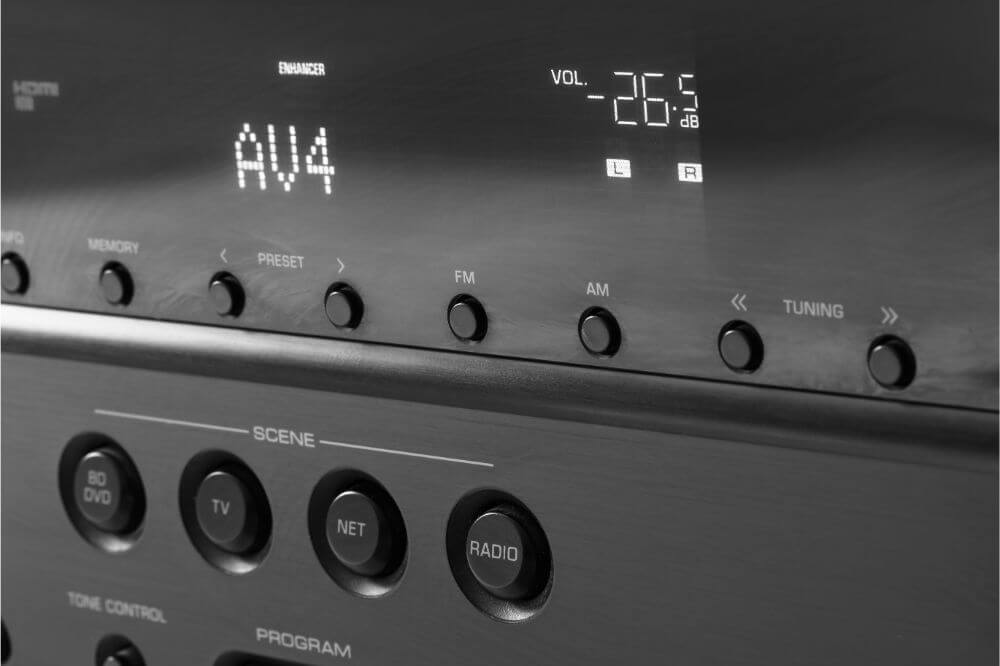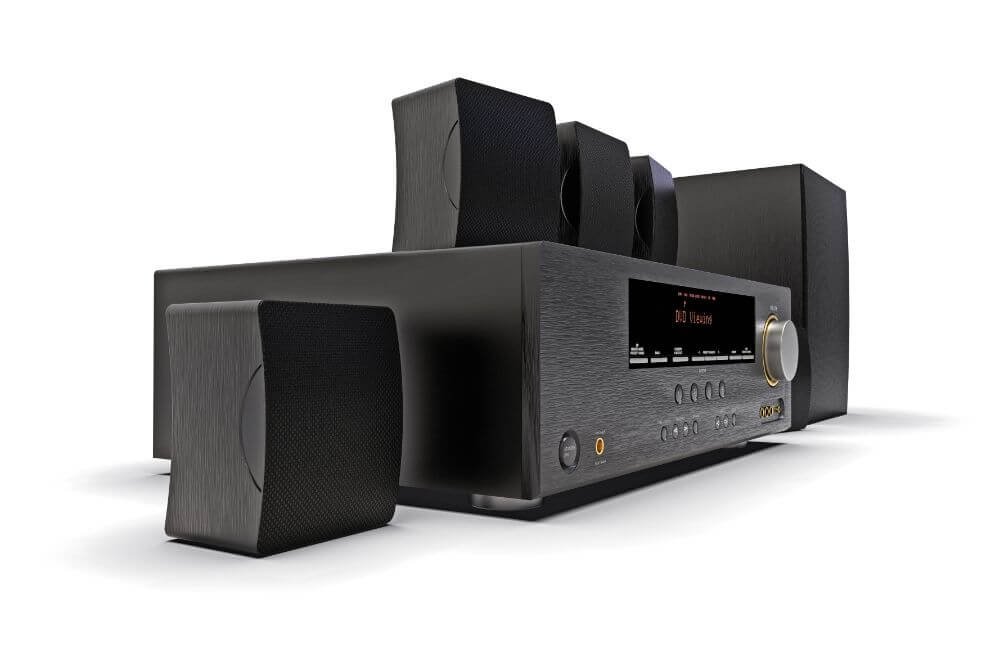Home theaters are one of the best forms of entertainment you can have at home. The comfort of your home, combined with the ability to entirely immerse yourself in a good movie, will give you a few good hours to unwind and relax.
You’re going to need some equipment, though. You can purchase complete sets either physically or online to set up your own home theater, or you can get the individual components yourself.
Within this article, we will be speaking about one of the most essential parts, the central hub of any home theater — the receiver. So let’s take a look at the answer to the question of what use is a receiver in a home theater.
What is an A/V Receiver?
At a very basic level, the audio/video receiver (sometimes referred to as a digital audio-video receiver or a digital media renderer) is the main piece of the home theater puzzle. Its job is to receive audio and video signals, as you can surmise from the name, and then manipulate them for display purposes through a projector or television.
It can perform the jobs of other equipment, such as the equalizer or preamplifier, using a single piece of hardware. This makes the process far more streamlined for home use.
As popularity in home theaters took off in the 80s and 90s, the role of the receiver diversified and expanded. It was developed to better handle a variety of different signals. Also, it was given more amplifiers for surround-sound capabilities, the ability to switch videos without needing to change devices, and much more.
As other forms of home theater equipment advanced alongside it, its functionality fell to the wayside a bit as other pieces of hardware began incorporating additional features into their systems.
What are the Functions of the Audio/Video Receiver?
There are a few different functions to modern receivers, but the overall functionality remains the same. It still retains its primary job of acting as a central unit to receive video and audio input and then deliver a final output for us to enjoy. Some of the features they include to complete this process are as follows:
Connects to and Switches Between Audio Sources
This is one of the two primary functions available with every receiver, and this encompasses the “audio” part. You’re going to want to connect every source of audio to your receiver so that it can manipulate it for better quality. The built-in preamplifier system allows you to quickly switch audio sources too, for additional ease of use of your home theater.
Connects to and Switches Between Video Sources
The other half of the namesake, the video receiving end of the receiver, receives all video input and then sends it to your display, which is most likely a television or projector.
This makes up the process of selecting and switching between video sources, as you ideally want all sources routed through the receiver. You won’t need to switch sources manually continually, as you can simply select via the remote control.
Tuning in to Radio Signals
Part of the receiver includes a radio tuner that allows it to tune in to satellite radio receivers, such as XM or Sirius radio. This means you can use your audio/video receiver to tune into satellite-based and exclusive content, such as various sports channels.
If this function doesn’t come with your receiver, you can have it built in. However, you will still have to pay a subscription, but there are some free “digital radio” options available in an HD radio format.
Decoding Surround Sound Formatting
One of the main perks of a home theater system is the immersion into the film, show, or whatever content you are viewing. Sound plays a huge role in this, especially surround sound.
The A/V receiver distinguishes itself from other, more traditional stereo receiver devices to decode and format analog and digital surround sounds for viewer immersion and enjoyment.

Amplifies Audio Inputs to Drive Speakers
Another feature that sets the A/V receiver apart from other types of receivers is its sound quality. In general, the standard for any audio/visual receiver is to have at least five channels to amplify audio inputs and drive them to your speaker and sound system.
Provides You With an Intuitive User Interface to Control Your Home Theater
One of the main reasons people get A/V receivers is also one of the most excellent features. Because everything should ideally be connected and routed through the receiver, you will be able to control everything connected directly.
You can either use the built-in buttons, dials, and display on the physical device, or you can use the handy remote control to control the system from the comfort of your seat.
A/V Receivers vs. Amplifiers
Given that we have gone over some of the features, some of you may think that the audio/video receiver does the same job as an amplifier. What’s the point, right? It makes sense that these two can be confused a lot of the time, as the two terms are often used interchangeably, despite the misconceptions.
The main difference between the two lies in their functionality. The receiver, as we have covered, is designed to receive both audio and video signals to manipulate and enhance the experience, improving the overall quality. An amplifier receives only an audio input that it amplifies to enhance audio output.
The main difference in that an amplifier is only useful for audio amplification, while the receiver can do everything that an amplifier can do and some. It is far more useful in that regard, as you can control all electronic facets of your home theater with a receiver, but not with an amplifier.
Whether or not you get a receiver instead of an amplifier is up to you, as there are pros and cons to each. In comparison, the receiver is often the cheaper option, as it is also an all-in-one package. Doing what the amplifier does and more, it also conserves space in your home theater.
The all-in-one nature also means it will cost a lot more to upgrade, however, balancing out that initial cheaper cost. As it isn’t precisely as specialized for a single task like the amplifier is, it won’t have the same level of quality when it comes to audio quality as an amplifier would.
A Note on Stereo Receivers
While a stereo receiver is undoubtedly a type of receiver, it isn’t exactly fit for a home theater setup. This is because it is mostly for audio use, much like an amplifier, allowing you to control and manipulate audio signals you send.
It is very rare for a stereo receiver to have any form of video support, so it still won’t be enough to consider this a viable option. Instead, you could use this for a surround-sound system that you use for audio entertainment, like for those of you who enjoy having music on in the background all the time.
Final Thoughts
To quickly summarize the functionality and use of a receiver in a home theater, you can use an A/V receiver in your home theater to consolidate all the components into a single device.
It makes setting up and controlling your home theater much more convenient, thanks to all the functionality it provides. It acts as the central hub that all your devices connect through. Also, it enhances the experience with its audio and video formatting abilities.


